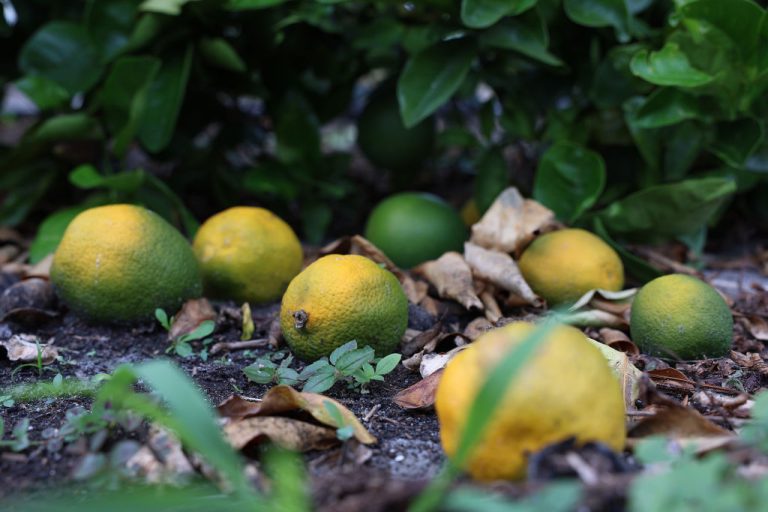Florida orange growers are set to post their lowest production records since the 1930s, according to the latest United States Department of Agriculture (USDA) analysis.
Citing the most recent USDA reports on the industry, Fort Myers Florida Weekly reported that state orange growers are set to fill only 15.65 million 90 pound boxes of oranges.
The figure represents the worst showing since 1934-1935 and is also down from a projection of 16.1 million boxes for the year.
41.2 million boxes is how many growers were able to fill just a year prior in the 2021-2022 season.
According to state radio outlet WUSF in December of 2022, the USDA had projected a harvest of 20 million boxes this season, a figure already slashed from 28 million.
Success
You are now signed up for our newsletter
Success
Check your email to complete sign up
The depressed numbers are attributed to damage inflicted by Hurricane Ian and a disease called huanglongbing (黃龍病) (HLB), which the USDA calls “the most serious disease of citrus” caused by the Asian citrus psyllid, which serves as a vector for the transmission of bacteria when feeding on new shoots.
MORE ON CROP TROUBLES
- Now There’s a Ketchup Crisis? Drought Demolishes California Tomato Crop
- A Cranberry Shortage is Brewing With Thanksgiving Around the Corner
- This Year’s Droughts Are Crushing the US Cotton Industry
- India, 40% of Global Rice Exports, Has Lost 13% of 2022’s Crops to Drought
The Agency’s website states “it is difficult to identify HLB-infected trees because they may remain asymptomatic for months to years after infection,” noting that symptoms include “stunted growth, reduced fruit size, premature fruit drop” and the eventual premature death of the tree.
The Weekly states that just over 20 years ago, Florida was producing more than 200 million boxes annually.
Florida grapefruit production was likewise slashed by roughly half compared to 2022, posting 1.8 million boxes instead of 3.33 million.
CEO of Alico, John Kiernan, a state citrus grower, stated in the company’s Q2 earnings report that, “Based upon prior experience with storms of this nature, we anticipate it may take up to two full seasons, or more, for our groves to recover to pre-hurricane production levels.”
Alico production showed a 55 percent decrease for the three months ending March of 2023 compared to March of 2022.
Kiernan told investors the company has collected almost $14 million in crop insurance between January and April, a significant number in light of the $20.9 million in revenue generated for the three months ending March 31.
$20.9 million is a figure down from $49.6 million in the same quarter just a year prior.
Florida orange farmer Glenn Beck told Fox Business for a May 24 article that the problems at hand for the industry were really the huanglongbing disease, “The disease is so widespread that it’s present everywhere.”
“We’re currently producing oranges in about six counties. Even though geographically it’s spread out, all of them encountered the same problems,” Beck stated.
Between the dueling calamities, Beck told Fox, “There have been many growers who suffered 90 percent and 100 percent losses.”
An article by The Epoch Times on the topic stated, “The $9 billion citrus industry employs more than 76,000 full- and part-time workers and provides over 90 percent of orange juice consumed in the United States.”
In recent years, the federal government in connection with UC Riverside and the University of Florida have been attempting to genetic engineer a tree resistant to HLB.
A 2022 UC Riverside article stated 350 hybrid strains were ready for examination, “All trees in the set are already infected with HLB, yet they live longer, are healthier, and yield more fruit than their infected relatives.”
A 2020 article by the University of Florida explained the task was daunting because the orange tree genome was so large that you “need to print 54,000 pages of copy paper to see the complete genome sequence.”
An April 20 article by the USDA on the topic of getting genetically modified rootstocks into the ground was proud to proclaim that, “From 2018 to 2020, the HLB-tolerant ‘US’ rootstocks were used to produce nearly 3 million new citrus trees, or about 37 percent of all trees propagated in Florida.”
“These rootstocks have also proven effective in areas affected by other diseases besides HLB,” the USDA added.
The agency stated that between ‘18 and ‘20, 1.8 million of the trees were planted, amounting to 22 percent of total propagation.















